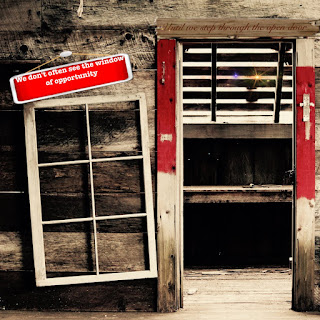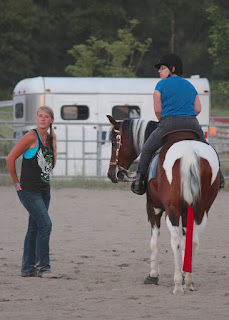I come from a family of 4 siblings, and between the 5 of us, only 2 of us have had children. I have one daughter, Casandra, and my sister, Moira has one daughter, Hanna. Both of our girls are completely different, but equally unique and talented. Although they do not see each other very often, they have a special bond of blood, and because they represent the "end of the line" in the MacQuarrie family tree! (no pressure there, girls)
My daughter, Casandra is a free spirit: creative, adventurous, outgoing, and talented. We recently unleashed her Google Site, that highlights her professional life and passions. Check it out Here! We created it using the new Google Sites, which is a fantastic tool for easily creating web pages.
 |
| Casandra (lft) and Hanna (rt), |
My niece, Hanna, is equally amazing in her own way! She is a highly driven individual, and excels at everything she puts her hand to. In her school years, she competed at the highest level of Irish Dance, qualifying for the World Championships. She has excelled in her academic pursuits, working her way through her undergrad at UBC, and moving on to her Masters and and now pursuing her Doctorate at none other than Oxford University. Along the way, she has earned multiple scholarships for outstanding achievement, which has funded her academic career. I could write realms of pages on her incredible accomplishments that she has packed into her mere 25 years!
Her particular area of interest is in museums and artifacts, and her field of study is WW1. Her doctoral thesis is focused on how commonwealth countries and communities dealt with the death of their soldiers on foreign soil and never returned home. This spring, Hanna is travelling to Australia, South Africa (eek!) and Canada to visit the War Graves Commissions Sites to study how countries responded to commemorating their fallen.
She is becoming a superstar in her field, highly respected, and sought out to speak at conferences around the world.
Recently, on her Blog, Hanna, referenced a book that was highly important to her research. The book is focused on the Australian experience and is directly tied to her work. Entitled, "A Distant Grief, Australians, War Graves and the Great War" by Bart Ziino, the text is described as, "the first major study to draw extensively on the archives of the Commonwealth War Graves Commission.. (and) adds a new dimension to our understanding of the ways in which individuals and communities responded to death and commemoration during and after one of the greatest traumas of the twentieth century."
Hanna has not been able to obtain her own copy of this book, for a variety of reasons, including the fact that it was ridiculously expensive.
I did a little digging around online and turned up an affordable copy, which I am so happy to be able to gift to you, Hanna!
I know when I was doing my Masters, I ran into a similar issue, looking for resources (that were few and far between) that tied directly to my research. ("How a "Dog In the Classroom", would Improve Social Connections between Special Needs Students and Their Peers.")
When I did find a book, I couldn't get my hands on a copy, so ended up contacting the Society who produced the book. The Society Program Director not only sent me a copy of the book, but also wrote me a beautiful letter, and offer of help.
It is something that I think we forget in education. There is an incredible community of educators that are so willing to share. Connections that I have made though Twitter as an educator, have been the most valuable contribution to my own professional network, and has provided me with an endless supply of resources, dialogue, and opportunity to improve my practice and build professional partnerships. It feeds my soul, provides me with inspiration, and connects me with like minded people.
So my amazing niece, I hope that having access to your own copy may in some small way help you along on your amazing journey. I know how freely you have given back to your professional community, and I wanted to tell you, and Casandra both that you continually leave me awe inspired, and forever thankful to have you both in my life!! xoxox





































